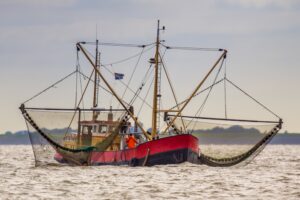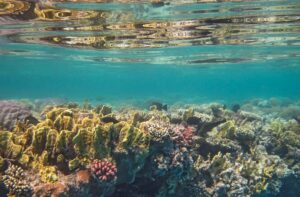Wildfires are no longer seasonal blips on the news — they’re becoming bigger, hotter, longer, and more dangerous. From Canada to California, Australia to the Amazon, wildfires are burning with a new intensity that’s reshaping landscapes, ecosystems, and entire communities.
This isn’t just about weather. It’s about systems — climate, land use, policy, and human choices — converging into a perfect storm. If we want to stop the escalation, we have to understand why wildfires are getting worse and what can actually be done to change it.
The Climate Connection: Hotter, Drier, Longer Seasons
Climate change is the leading accelerant behind today’s wildfire crisis. Rising global temperatures are drying out vegetation, extending fire seasons, and creating ideal conditions for ignition and spread.
- Longer fire seasons: In the Western U.S., fire season now lasts 70 days longer than it did 50 years ago.
- Hotter summers: Record-breaking heat dries out forests, turning them into tinderboxes.
- Less snowpack: Earlier snowmelt means less soil moisture in summer, increasing flammability.
- More lightning: Studies show that lightning strikes, a major cause of wildfires, are increasing with warming temperatures.
The result? Fires that are harder to control, faster to ignite, and more likely to grow into megafires — those that burn more than 100,000 acres.
Fire Suppression Backfired
For over a century, land managers operated under a policy of total fire suppression. The goal was simple: put out every fire as quickly as possible. But this approach, while well-intentioned, had unintended consequences.
By stopping smaller natural fires — which used to clear out brush and dead wood — we allowed fuel to build up in forests, year after year. Now, many forests are unnaturally dense and overloaded with dry fuel. When they do burn, they burn explosively.
This is especially true in the western United States, where decades of fire suppression have led to dangerously overgrown forests that are ripe for catastrophe.
Mismanaged Forests and Invasive Species
In addition to suppression, logging practices and land development have fragmented ecosystems and disrupted natural fire cycles.
- Clearcutting and monocultures: Replanting single-species trees after logging has created uniform, highly flammable forests.
- Invasive grasses: Species like cheatgrass in the U.S. or gamba grass in Australia create fast-spreading fire corridors, especially in dry conditions.
- Urban expansion: More homes are being built in fire-prone areas — the wildland-urban interface — which increases both ignition risk and disaster impact.
These human choices, layered on top of climate pressures, have turned fire into a far more dangerous force than it used to be.
Indigenous Fire Knowledge Was Ignored
For thousands of years, Indigenous communities across the world used controlled burns — also known as cultural burning or fire-stick farming — to manage the land. These low-intensity burns reduced fuel loads, promoted ecosystem health, and prevented megafires.
Colonial policies criminalized these practices and displaced the people who carried this knowledge. In their place, modern fire regimes prioritized suppression, extraction, and development.
Today, scientists are finally starting to recognize the value of Indigenous fire knowledge. In Australia, Canada, and parts of the U.S., partnerships are forming to reintroduce cultural burning as a vital part of wildfire management.
Firefighters Are Overwhelmed
Wildfire crews are facing unprecedented conditions. High temperatures, wind-driven fires, and shifting terrain make containment more dangerous and less predictable.
At the same time, firefighters are being asked to do more with less:
- Budget cuts in state and federal agencies limit prevention work.
- Short-term contracts and underpayment lead to retention problems.
- Fire seasons are now year-round, pushing crews to physical and mental limits.
In some areas, inmates or seasonal contractors are used to fill gaps — a stopgap solution that reveals the deep cracks in wildfire workforce infrastructure.
Insurance Systems Are Collapsing
The financial cost of wildfires is climbing fast. Insurers in California, for example, are pulling out of high-risk areas entirely. As wildfire risks increase, entire regions may become uninsurable — making rebuilding nearly impossible for families, businesses, and municipalities.
Climate-fueled fires are triggering a ripple effect of financial instability, threatening housing markets, local economies, and insurance systems that weren’t built for the scale of destruction we’re now seeing.
What Needs to Change — Fast
1. Reintroduce Fire as a Management Tool
Controlled burns, or prescribed fire, must return as a core part of land stewardship. This includes investing in Indigenous-led fire programs and respecting traditional ecological knowledge that predates modern firefighting.
2. Fund Prevention, Not Just Response
Budgets should prioritize fuel reduction, forest thinning, and community preparedness — not just emergency response. Fire prevention saves lives and reduces long-term costs.
3. Build Smarter, Not Just Rebuild
Communities in high-risk areas must adapt building codes to include fire-resistant materials, defensible space requirements, and escape planning. Local zoning must also consider whether rebuilding in the same location is sustainable.
4. Modernize the Fire Workforce
Wildland firefighters need year-round employment, benefits, mental health support, and training that reflects today’s fire realities. Recruitment should reflect diversity, and Indigenous fire crews should be funded as equal partners.
5. Confront the Role of Fossil Fuels
The elephant in the room is climate change — and that means reducing emissions. Without serious mitigation, even the best land management can’t keep up with worsening fire weather. Transitioning to clean energy and enforcing strong climate policy is non-negotiable.
6. Protect Vulnerable Communities
Low-income, rural, and Indigenous communities often face the highest fire risk and the fewest resources to recover. Equitable adaptation policies — including grants, relocation support, and resilience funding — are critical.
Final Thoughts: Fire Is Part of Nature. Megafires Are Not.
Wildfire itself isn’t the enemy — it’s a natural part of many ecosystems. But the megafires we’re seeing today are not natural. They’re the product of broken systems, short-sighted policies, and climate destabilization.
To move forward, we need more than emergency declarations. We need leadership, humility, and a willingness to work with nature — not against it.
This is not just about fire. It’s about how we live, how we govern, and how we protect the future from going up in smoke.









Reader Interactions